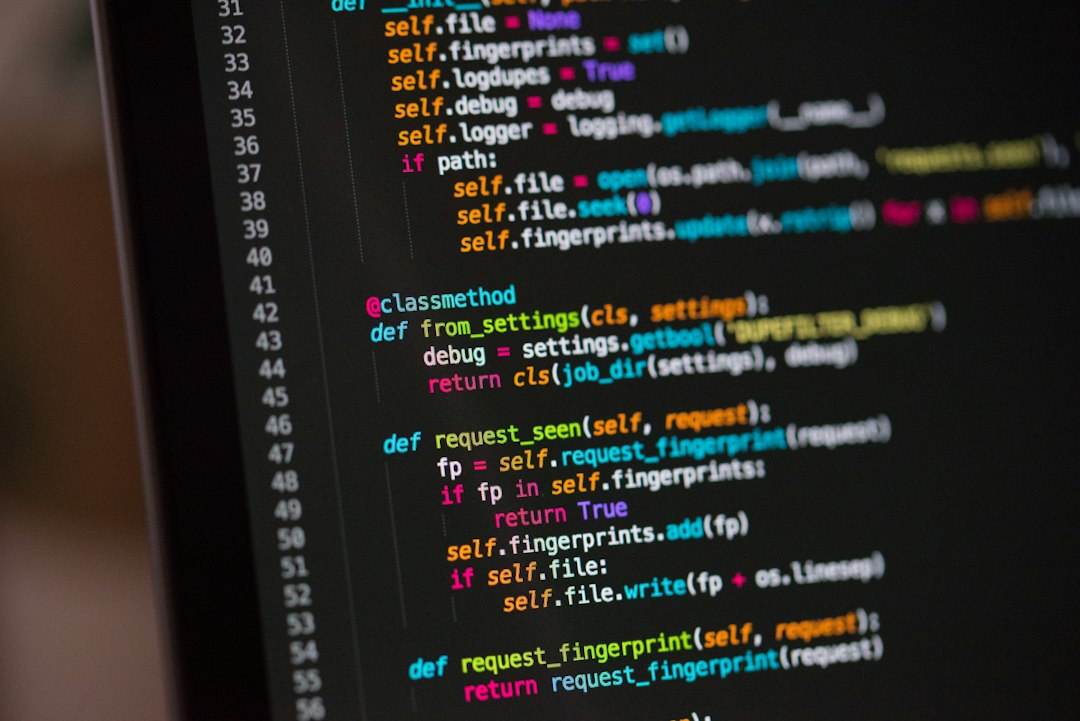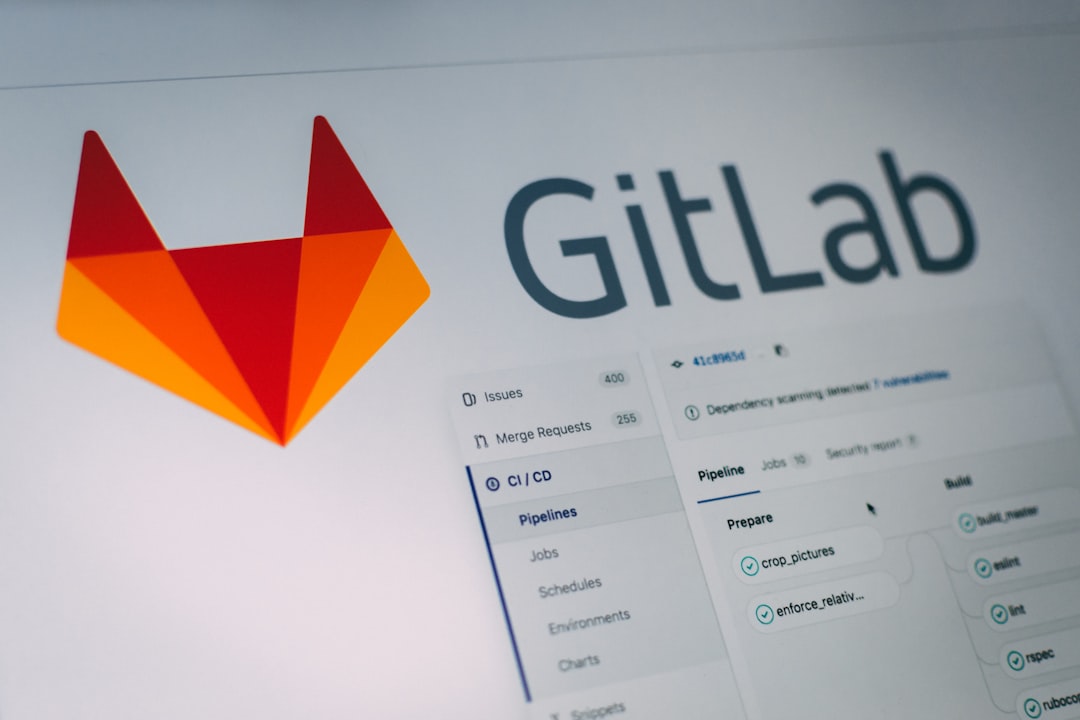Welcome to our blog post on the crucial topic of effective bug hunting in software development! Bugs, or software defects, can cause significant issues and hinder the smooth functioning of any software application. Whether you are a seasoned developer or just starting your coding journey, understanding the importance of bug hunting and developing effective strategies to tackle them is essential for delivering high-quality software.
In today’s fast-paced software development landscape, where new features and updates are constantly being rolled out, it is imperative to have a proactive and robust bug hunting process. By identifying and resolving bugs early on, you can save valuable time, resources, and improve the overall user experience.
But why is effective bug hunting so crucial? Firstly, bugs can have severe consequences ranging from minor inconveniences to critical system failures. Imagine a bug in an e-commerce website that causes customers’ transactions to fail. This could result in lost sales, decreased customer satisfaction, and damage to the company’s reputation. By proactively hunting and fixing bugs, you can prevent such catastrophic scenarios.
Secondly, effective bug hunting fosters a culture of continuous improvement. As a developer, you have the opportunity to learn and refine your coding skills by identifying and resolving complex or elusive bugs. This iterative process allows you to gain valuable insights into your codebase, enhancing your problem-solving abilities and making you a more proficient developer.
Furthermore, by consistently hunting for bugs, you contribute to the stability and reliability of the software you develop. This not only enhances the end-user experience but also boosts the credibility of your organization or product. Customers are more likely to trust and rely on software that has a track record of being bug-free and well-maintained.
Lastly, effective bug hunting helps you become a more adaptable developer. Bugs often arise due to unpredictable scenarios, user interactions, or system configurations. By mastering bug hunting techniques, you develop the ability to quickly adapt to changing circumstances and identify potential issues before they become problematic.
In conclusion, the importance of effective bug hunting in software development cannot be overstated. It is not only about finding and fixing bugs but also about continuous learning, improving code quality, and ensuring customer satisfaction. In the following sections, we will delve deeper into the various stages of bug hunting and provide valuable insights and strategies to help you become a proficient bug hunter. So, let’s dive in and explore the fascinating world of bug hunting together!
Understanding the Bug: Identifying and Defining the Bug Accurately
In the world of software development, bugs are an inevitable part of the process. No matter how proficient and experienced a developer might be, bugs can still find their way into the codebase. Consequently, it becomes crucial to understand the bug thoroughly and accurately in order to resolve it effectively. In this section, we will explore the various aspects of understanding a bug, from identification to definition.
Identifying a bug is the first step towards resolving it. This involves recognizing the deviation between the expected behavior of the software and the actual behavior observed. It requires a keen eye for detail and a systematic approach to debugging. By closely examining error messages, log files, and user reports, a developer can start pinpointing areas of concern.
Once a bug has been identified, the next step is to define it accurately. This entails documenting the bug with sufficient detail so that other developers can understand and reproduce it. A well-defined bug report includes information such as the steps to reproduce the bug, the expected and actual results, the environment in which the bug occurred, and any relevant screenshots or error logs.
Accurate bug definition paves the way for efficient bug hunting. By providing clear and concise information about the bug, developers can save valuable time that might otherwise be spent trying to understand and reproduce the issue. This, in turn, allows for quicker resolution and a more streamlined development process.
Moreover, understanding the bug also involves analyzing its impact on the software. Is it a critical bug that affects core functionality, or is it a minor issue that only impacts a specific feature? By assessing the severity and consequences of the bug, developers can prioritize their efforts and allocate resources effectively.
Understanding the bug is not a one-time endeavor. It requires adaptability and continuous learning. As software evolves and new features are added, new bugs may arise. Therefore, developers must stay vigilant and proactive in their bug hunting efforts.
While understanding the bug is primarily the responsibility of the developer, collaboration within the development team is also vital. By discussing and sharing insights about bugs, developers can gain different perspectives and collectively work towards a solution.
Ultimately, accurately identifying and defining bugs sets the stage for successful bug hunting. It establishes a solid foundation for further investigation and resolution. By investing time and effort in understanding bugs, developers can enhance their debugging skills and contribute to the overall improvement of the software development process.
By providing clear and concise information about the bug, developers can save valuable time that might otherwise be spent trying to understand and reproduce the issue.
Reproducing the Bug: Methodologies to Recreate the Bug Consistently
Once a bug has been identified and defined accurately, the next crucial step in effective bug hunting is reproducing the bug consistently. Reproducing a bug allows developers to have a clear understanding of its behavior and aids in finding the root cause. Without a reliable and consistent way to reproduce the bug, it becomes significantly more challenging to analyze and resolve it.
Reproducing a bug involves following a set of methodologies that can vary depending on the nature of the bug and the software being developed. Here are some commonly used techniques to help you reproduce bugs consistently:
- Create a Reproduction Scenario: Start by documenting the steps or conditions that trigger the bug. This includes specific actions, inputs, or configurations that consistently lead to the bug’s occurrence. By recreating the same scenario repeatedly, you can gain insights into the bug’s behavior and better understand its underlying causes.
- Use Test Data: Sometimes, bugs may only manifest themselves under specific circumstances or with particular data inputs. By using various test datasets, you can explore different scenarios and identify patterns that contribute to the bug’s appearance. This approach helps narrow down the bug’s scope and provides valuable clues for further investigation.
- Record and Playback: Utilize tools or frameworks that allow you to record a series of actions or inputs and then replay them. This technique can be especially useful when dealing with intermittent bugs that are challenging to reproduce manually. By recording the steps leading to the bug and replaying them, you can consistently recreate the bug and observe its behavior in a controlled environment.
- Isolate Dependencies: Bugs can be caused by various factors, including interaction with external systems, dependencies on specific hardware or software versions, or even timing issues. To reproduce the bug consistently, it is crucial to isolate and control all relevant dependencies. This can involve mocking or stubbing external services, using virtualized environments, or deploying the software on specific hardware configurations.
Reproducing a bug consistently is an iterative process that requires adaptability and patience. It may involve multiple attempts, tweaks, and adjustments to the reproduction scenario or test data. However, investing time and effort into accurately recreating the bug will pay off in the subsequent stages of bug hunting, making it easier to analyze and ultimately fix the bug.
Remember, the ability to consistently reproduce a bug is not only vital for developers but also for effective collaboration with other team members, including testers and stakeholders. By providing a reliable and consistent reproduction scenario, you enable others to validate and verify the bug’s existence, facilitating a more efficient debugging process.
Mastering the methodologies to reproduce bugs consistently is a crucial skill for every software developer. It allows for a deeper understanding of the bug’s behavior and aids in isolating the root cause. By documenting the reproduction scenario, using various test data, recording and replaying actions, and isolating dependencies, developers can improve their bug hunting effectiveness and contribute to the overall quality of the software being developed.
This can involve mocking or stubbing external services, using virtualized environments, or deploying the software on specific hardware configurations.
4. Isolating the Bug: Narrowing down the scope to identify the root cause
Identifying a bug is just the first step in the debugging process. Once a bug has been identified, it is crucial to isolate it to understand its root cause accurately. Isolating the bug involves narrowing down the scope of the problem, eliminating potential causes, and focusing on the specific code or functionality where the bug originates.
To isolate a bug effectively, developers need to adopt a systematic approach that allows them to delve deep into the code and pinpoint the exact source of the issue. Here are some techniques and strategies that can help in this crucial phase of bug hunting:
1. Reproduce the bug consistently: Before diving into isolating the bug, it’s essential to ensure that the bug can be reproduced consistently. Reproducing the bug consistently allows developers to analyze the problem in a controlled environment and minimize the chances of false assumptions. This can be achieved by following the steps outlined in the previous section on reproducing the bug.
2. Divide and conquer: Once the bug is reproducible, it’s time to narrow down the scope by using a divide and conquer approach. Start by identifying the parts of the codebase that are directly related to the observed bug. This can be done by reviewing the error messages, logs, and tracing the execution flow. By isolating the specific code or functionality related to the bug, developers can save time and avoid getting lost in unrelated parts of the codebase.
3. Use debugging tools: Debugging tools can be immensely helpful in isolating bugs. Integrated development environments (IDEs) often come equipped with powerful debugging features that allow developers to set breakpoints, step through the code, and inspect variables at runtime. These tools enable developers to analyze the code execution flow, identify anomalies, and gain insights into the bug’s underlying cause.
4. Analyze logs and error messages: Logs and error messages can provide valuable information about the bug. By carefully analyzing the logs and error messages generated during the occurrence of the bug, developers can gain insights into potential causes and narrow down the scope of investigation. Pay close attention to any patterns or recurring errors that might indicate a specific area of the code that needs further examination.
5. Temporarily disable code: In some cases, it might be beneficial to temporarily disable certain parts of the code to isolate the bug. By selectively disabling code sections that are suspected to be the root cause, developers can observe the behavior of the system without the influence of the potentially problematic code. This technique can help in narrowing down the scope even further and focusing on the critical areas of investigation.
6. Utilize version control: Version control systems, such as Git, can be invaluable during the bug isolation process. By utilizing branches and committing changes, developers can experiment and make modifications without affecting the main codebase. This allows for more freedom to isolate and test potential fixes or modifications without the fear of breaking the existing code. Additionally, version control systems enable easy collaboration and knowledge sharing among team members working on isolating the bug.
Remember, isolating a bug requires patience, adaptability, and attention to detail. It is a process that might require multiple iterations and a combination of different techniques. As a developer, it’s crucial to stay focused, organized, and open-minded throughout the process. Don’t hesitate to seek assistance from colleagues or online communities when facing challenges.
By effectively isolating the bug and narrowing down the scope to its root cause, you will not only save time and effort but also gain a deeper understanding of the underlying problem. This knowledge will lay the foundation for the next step in the debugging process – analyzing the code to find the bug. So, stay determined, embrace the challenge, and let’s move forward with our bug-hunting journey!
Reproducing the bug consistently allows developers to analyze the problem in a controlled environment and minimize the chances of false assumptions.
Analyzing the Code: Techniques for Examining the Code to Find the Bug
When it comes to bug hunting, a key aspect of the process is analyzing the code. This crucial step involves examining the code thoroughly to identify the root cause of the bug. By diving into the code, developers can gain valuable insights into how the bug manifests and understand the underlying issues that need to be addressed.
Here are some techniques that can be employed to effectively analyze the code and uncover the hidden bugs:
1. Code Review:
One of the fundamental techniques for analyzing the code is conducting a comprehensive code review. This involves carefully examining the codebase, line by line, to identify any potential issues or areas that might be causing the bug. By scrutinizing the code, developers can identify logical errors, incorrect assumptions, or potential vulnerabilities that could lead to bugs.
2. Debugging Tools:
Utilizing debugging tools is an invaluable technique for analyzing the code and pinpointing the bug. These tools provide developers with the ability to step through the code, inspect variables, and track the execution flow. With the help of breakpoints, developers can pause the code at specific points and observe the state of the program. This real-time examination of the code allows for a deeper understanding of its behavior and aids in identifying the bug.
3. Logging and Error Messages:
Logs and error messages are essential tools for analyzing the code. By strategically placing log statements throughout the codebase, developers can gain insights into the program’s execution flow and track the values of variables at different stages. Additionally, error messages provide crucial information about the encountered issue, facilitating the process of isolating and fixing the bug.
4. Unit Testing:
Implementing unit tests can greatly aid in analyzing the code and identifying bugs. By writing tests that cover different scenarios, developers can ensure that the code performs as expected and detect any unexpected behavior. Unit tests provide a safety net, allowing developers to catch potential bugs early on and analyze the code in isolation, making it easier to identify the root cause.
5. Code Analysis Tools:
There are various code analysis tools available that can assist in the process of examining the code for bugs. These tools analyze the codebase statically or dynamically, detecting potential issues, code smells, and vulnerabilities. By leveraging these tools, developers can save time and effort in manually analyzing the code and focus on addressing the bugs identified by these automated tools.
Remember, analyzing the code is not a one-size-fits-all approach. Different bugs require different techniques and adaptability is key to successful bug hunting. It is crucial to approach the code with an open mind, considering various possibilities and exploring different angles to find the bug.
By employing these techniques and combining them with your debugging skills, you can enhance your bug hunting capabilities and become a more efficient and effective software developer.
With the help of breakpoints, developers can pause the code at specific points and observe the state of the program.
Fixing the Bug: Strategies to Resolve the Bug Efficiently and Effectively
Now that we have successfully identified and understood the bug, reproduced it consistently, and isolated its root cause, it’s time to delve into the crucial step of fixing the bug. In this phase, we will explore various strategies and techniques that can help us resolve the bug efficiently and effectively.
1. Plan and prioritize: Before diving into the code, it’s essential to have a plan in place. Analyze the impact of the bug on the software and prioritize it based on severity and customer impact. This will ensure that you allocate your resources effectively and tackle the most critical bugs first.
2. Understand the code: Take the time to thoroughly understand the codebase related to the bug. Familiarize yourself with the relevant modules, functions, and data structures involved. This will enable you to pinpoint the exact area where the bug resides and provide you with valuable insights into its potential causes.
3. Collaborate and communicate: Bug fixing is not a solitary endeavor. It often requires collaboration with other team members, such as developers, testers, and product owners. Engage in open communication channels, share your findings, and discuss potential solutions. Leveraging the diverse perspectives and expertise within your team can greatly expedite the bug fixing process.
4. Use debugging tools: Debugger tools are your best friends when it comes to fixing bugs. Use them to step through the code and examine the values of variables at different stages of execution. By doing so, you can catch any unexpected behavior, identify faulty logic, or uncover any incorrect assumptions made during the development process.
5. Write comprehensive tests: While fixing a bug, it’s crucial to write comprehensive tests to ensure that the issue is resolved permanently. These tests should cover the specific scenario that caused the bug and any related edge cases. By doing this, you not only fix the bug at hand but also create a safety net that prevents its recurrence in the future.
6. Refactor if necessary: Sometimes, fixing a bug may require refactoring the codebase. If you encounter complex or convoluted sections of code that contribute to the bug, consider refactoring them to improve readability, maintainability, and overall code quality. However, be cautious while refactoring and ensure that you have an extensive test suite to validate the changes.
7. Verify and validate the fix: After implementing the fix, thoroughly test it to ensure that it resolves the bug without introducing any new issues. Use both manual and automated testing techniques to validate the fix across different environments, platforms, and scenarios. Continuous integration and continuous deployment pipelines can help automate this process and provide you with quick feedback.
Remember, bug fixing is not just about resolving the immediate issue; it’s about continuously improving your debugging skills. Each bug presents a learning opportunity to enhance your understanding of the codebase, identify potential pitfalls, and refine your development practices.
So, embrace the challenge, stay adaptable, and never stop learning. With effective bug hunting and continuous improvement, we can strive for software that is of the highest quality and delivers exceptional user experiences.
If you encounter complex or convoluted sections of code that contribute to the bug, consider refactoring them to improve readability, maintainability, and overall code quality.
Conclusion: Emphasizing the Significance of Effective Bug Hunting and Continuous Improvement in Debugging Skills
In conclusion, effective bug hunting plays a crucial role in software development, ensuring the delivery of high-quality and reliable products to end-users. It is not just about finding and fixing bugs; it is about understanding the bug, reproducing it, isolating it, analyzing the code, and ultimately resolving it efficiently and effectively.
Throughout this blog post, we have discussed various aspects of the bug hunting process, from accurately identifying and defining bugs to narrowing down the scope and finding the root cause. We have also explored different methodologies for reproducing bugs consistently and techniques for analyzing the code to locate the bug.
However, it is important to note that bug hunting is not a one-time task but an ongoing process. Software systems are complex, and bugs can always slip through even the most rigorous testing and development processes. That’s why continuous improvement in debugging skills is crucial for software developers.
By continuously honing their bug hunting skills, developers can become more adept at identifying and resolving bugs efficiently. This includes staying updated with the latest debugging tools, techniques, and methodologies. It also involves actively seeking feedback and learning from past experiences to improve their debugging strategies.
Moreover, effective bug hunting is a collaborative effort. Developers should actively communicate and share their findings with their peers, as this can lead to faster bug resolutions and prevent similar issues from occurring in the future. Collaborative bug hunting also fosters a culture of learning and knowledge sharing within software development teams.
Lastly, it is important to maintain a positive and adaptable mindset when hunting for bugs. Bugs can be frustrating and time-consuming, but with the right attitude, developers can turn them into valuable learning opportunities. Each bug presents a chance to delve deeper into the codebase, understand the system better, and enhance the overall quality of the software.
In conclusion, effective bug hunting and continuous improvement in debugging skills are vital for successful software development. By following the methodologies and techniques discussed in this blog post, developers can become more efficient and effective bug hunters, ensuring the delivery of high-quality software products.
So, embrace the challenge, stay curious and open-minded, and never stop improving your bug hunting skills. Happy bug hunting!





